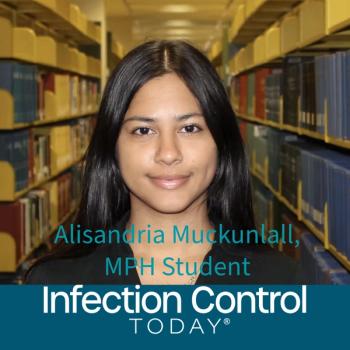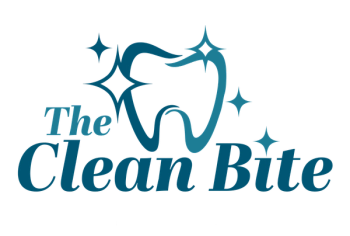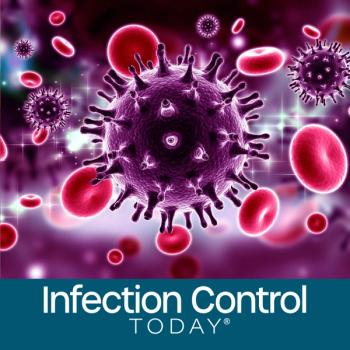
EPA Decision Opens New Chapter for Rechargeable Antimicrobial Textiles
After nearly a decade of research and regulatory review, the US Environmental Protection Agency (EPA) has determined that Micrillon, a polymer-based antimicrobial additive developed by UMF Corporation, is not a pesticide—clearing the way for new infection prevention applications. In this interview, UMF President George Clarke and Editorial Advisory Board member Heather Stoltzfus, MPH, RN, CIC, discussed how this rechargeable technology could redefine cleaning, sustainability, and surface safety across healthcare and hospitality settings.
Innovation in infection prevention often begins with rethinking the basics —how we clean, disinfect, and protect the materials we touch every day. In a recent conversation with Heather Stoltzfus, MPH, RN, CIC, a contributing editor for Infection Control Today®(ICT®), George Clarke, president of PerfectCLEAN and UMF Corporation, shared groundbreaking news: After nearly a decade of testing and review, the US Environmental Protection Agency (EPA) has determined that Micrillon, the company’s polymer-based antimicrobial technology, is not a pesticide.
“This determination opens the door for a wide range of new applications,” Clarke explained. “Micrillon is a very cost-effective polymer additive—it’s not a coating or surface treatment. We take Micrillon pellets and add them into the pellets being made on a spin line to make fiber or injection-molded parts. The chemistry becomes permanently embedded in the material.”
Unlike conventional surface sprays or treatments that wear off over time, the technology’s strength lies in its durability and rechargeability. When exposed to chlorine—whether through bleach in laundry or chlorinated disinfectants—the material binds chlorine atoms at the molecular level. “Those fibers, once charged with the chlorine atom, have been shown effective against bacteria, viruses, fungi, and yeast,” Clarke said.
The EPA’s recent ruling allows UMF to move forward with full-scale deployment and to communicate the product’s potential to prevent infections. As Clarke put it, “After 5 years of educating the EPA, they’ve concluded Micrillon is not a pesticide. That means hospitals, long-term care, and other sectors can use it as a built-in antimicrobial technology—without concerns about regulatory overlap or limitations.”
Heather Stoltzfus, RN, MSN, CIC, and member of Infection Control Today®’s Editorial Advisory Board, noted how the innovation aligns with current infection prevention goals. “I’m just really excited about where the technology is going to take us,” she said. “Especially when it comes to cleaning—how do we move the needle further toward prevention?”
Clarke described several products already developed with the technology. “One of our most successful has been a Micrillon glove tested by a third-party pharmaceutical lab,” he said. “It eliminated COVID-19, H1N1 influenza, methicillin-resistant Staphylococcus aureus, and other pathogens in under 2 minutes, [a] 100% kill rate.” Other applications include privacy curtain grips, antimicrobial fabrics for linens and towels, and even reusable, washable N95 masks developed in partnership with Drexel University’s Center for Functional Fabrics.
The sustainability implications are equally significant. “Instead of throwing [a mask] into the waste dump, you throw it in the washing machine,” Clarke noted.
When asked about recharging frequency, Clarke emphasized that in health care and hospitality environments, frequent laundering and cleaning cycles maintain continuous efficacy. “Surfaces are wiped down daily,” he said. “In hospitals and hotels, that process keeps the bio-load low—so you’re constantly recharging the surface with chlorine atoms.”
Looking ahead, Stoltzfus, who is also a member of the ICT Editorial Advisory Board, asked Clark about the future of environmental services (EVS). Clarke called for more consistency in environmental hygiene standards. In fact, Clarke
“I believe (EVS) and infection prevention should be working more closely together. Honestly, I think it should be 1 department,” he said. “There’s no point in focusing on hand hygiene if the first surface people touch is contaminated.”
As infection preventionists look to balance sustainability, safety, and innovation, Clarke’s closing point resonates: “Our goal is to create technologies that make prevention practical. We want to give infection preventionists, nurses, and EVS teams tools that really work—every day, on every surface.”
Newsletter
Stay prepared and protected with Infection Control Today's newsletter, delivering essential updates, best practices, and expert insights for infection preventionists.





